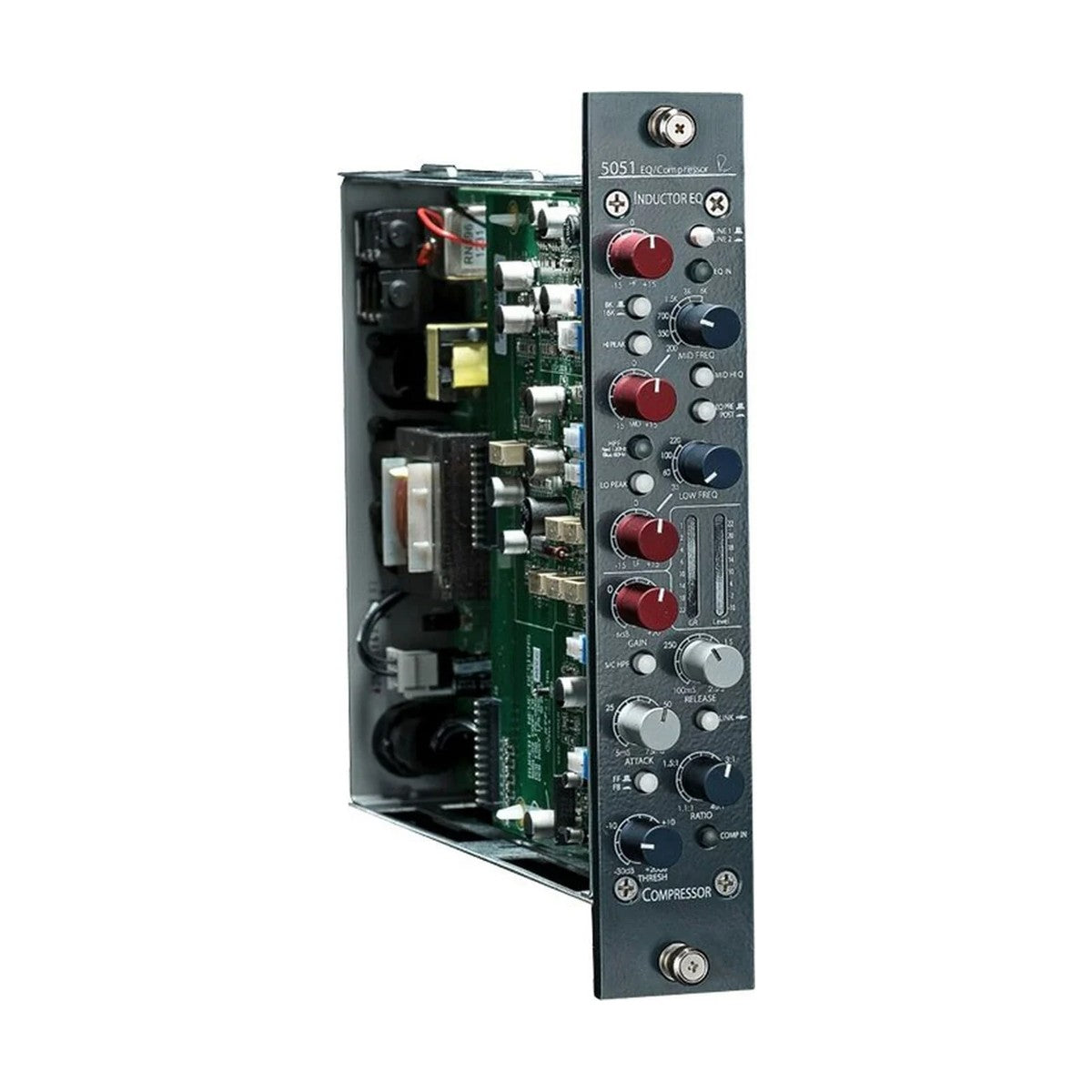
Rupert Neve Designs
Rupert Neve Designs 5051 Shelford Inductor EQ and Compressor (vertical only)
This item is available on a custom order basis only. Please contact us for more details. Contact us
Choose options
This item is available on a custom order basis only. Please contact us for more details. Contact us
This item is available on a custom order basis only. Please contact us for more details. Contact us
Rupert Neve Designs 5051 Shelford Inductor EQ / Compressor (vertical only) – 500-series module with 3-band inductor EQ and Portico II compressor, vintage-inspired. Offers classic sound with discrete class-A signal path, custom transformers/inductors. Ideal for punchy compression and tone shaping in studios/live. Compact (9.375″ x 1.75″, 0.5 kg) for 500-series lunchboxes.
5051 features preamp with 72 dB gain, HPF 60/120 Hz, EQ: LF (30/60/100/220 Hz, shelf/peak ±15 dB), MF (200/350/700/1.5/3/6 kHz, ±15 dB, Hi Q), HF (8/16 kHz, shelf/peak ±15 dB). VCA compressor with threshold -30 to +20 dBu, ratio 1.1:1-40:1, attack 5-75 ms, release 100 ms-2.5 s, gain -6 to +20 dB. Silk Red/Blue for harmonics. Hand-soldered in USA.
As classic tribute, blends vintage with precision, ready for mixes without compromise.
MAIN FEATURES
- 3-band inductor EQ with custom inductors for bass, mid, HF
- VCA compressor with feed-forward/back, RMS/peak, pre/post EQ
- HPF 18 dB/octave (60/120 Hz)
- Silk Red/Blue with Texture for harmonics
- Stereo linking with second 5051
- Compatible with 500-series
- Low latency, high headroom
- Vertical only (vertical mounting)
TECHNICAL SPECIFICATIONS
- Dimensions: 9.375″ H x 1.75″ W (vertical only)
- Weight: 0.5 kg
- Power: ±24 V DC (from external 2U rack PSU)
- Inputs/Outputs: Line Select (Line 1/2), Main Output
- Frequency Response: -3 dB @ 2.5 Hz and 125 kHz (Line In)
- THD + N: <0.002% @ 1 kHz (+20 dBu, Line In); <0.007% (EQ); <0.020% (Comp)
- Noise: <-102 dBu (Line In, unity); <-92 dBu (EQ/Comp)
- Max Input: +25 dBu (Line In/Comp); +24.5 dBu (EQ)
- Max Output: +25 dBu (Line In/Comp); +24.5 dBu (EQ)
- Compressor: Threshold -30 to +20 dBu; Ratio 1.1:1-40:1; Attack 5-75 ms; Release 100 ms-2.5 s; Gain -6 to +20 dB
- Included: 5051, manual
- Product Code: RND-5051





